Introduction
The 1960's were often referred to, and still are, as the 'Swinging 60's' but the following account of the major events of this decade may give you a different perspective. Exciting, historic, revolutionary, colourful, life-changing, violent are just some of the words to describe a decade that has never been replicated since and maybe never will.
This was a time when we burst out of our post war doldrums and were determined to live a life that was meaningful and rewarding in spite of and perhaps because of what our parents had endured for most of the first half of the century. The new decade started with so much promise when JFK was elected to the presidency and then my team Spurs did the league and cup double (1961) and ended with man going to the moon. An awful lot happened in between. And right in the middle (1966) England of course won the World Cup beating Germany 4-2 in the final.
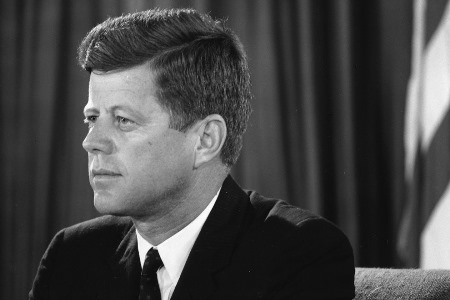
John Fitzgerald Kennedy
On Jan'20th 1961 JFK was inaugurated as youngest elected US president. It is widely recognised that his acceptance speech is one of the greatest of the 20th Century. His inspiring final words that encapsulated why so many of us young people (I was coming up 15 at the time) wanted to hear in an uncertain age:
“And so, my fellow Americans: ask not what your country can do for you - ask what you can do for your country. My fellow citizens of the world: ask not what America will do for you, but what together we can do for the freedom of man”.
If you are interested his speech can be read or heard on the following links Speech (audio) or Speech (transcript)
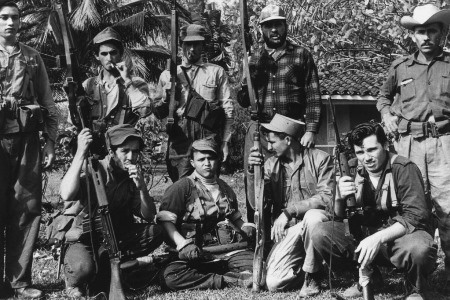
The Bay of Pigs
The Bay of Pigs has correctly been called a fiasco and a failure. Early in 1960, President Dwight D. Eisenhower authorized the CIA to recruit Cuban exiles living in Miami and train them for an invasion of Cuba. The group that became known as Brigade 2506, given the serial number of one of the group who was killed during training, was initially 28 members, including 10 former Cuban military officers. After training in secret camps in the Florida Everglades the brigade moved its base to the Sierra Madre in Guatemala.
On Apr’15th 1961, eight B-26 bombers took off from Nicaragua and bombed Cuban military aircraft on the ground, hoping to wipe out Castro’s air force before the planned invasion by around 1200 mercenaries at Playa Girón, popularly known as the Bay of Pigs. Later that day, two other bombers landed in Miami and Key West, Florida, where their pilots claimed to be Cuban defectors that had participated in the air raids in an attempt to ensure that the attacks appeared to be the work of Cubans only, lending credibility to the U.S. government’s denial of involvement.
This backfired as reporters noticed that the planes were not of the type used in the raid and their guns had not been fired. The fall-out from this led JFK to cancel the second planned raid that might have finished the job. However, on Apr’19th, JFK authorised a second bombing raid to defend the ground troops who were under siege at Girón, but they arrived before their escort cover from a US Navy aircraft carrier and two B-26B bombers were shot down and four US officers killed. The mercenaries were vastly outnumbered and surrendered within 24 hours with over 100 killed.
For years, the CIA refused to admit the involvement of these U.S. servicemen in the invasion, even though Castro’s government announced it had the body of an American pilot on the day that his plane was shot down. After preserving the remains of the pilot, Captain Thomas Willard Ray, for years, Cuba returned his body to his family in 1979. For its part, the CIA waited until the 1990’s, and the declassification of many Bay of Pigs-related documents, to admit Ray’s link to the agency and award him its highest honour, the Intelligence Star. After being publicly interrogated and branded as ‘yellow worms’ the surviving members of Brigade 2506 (around 1100 soldiers, were finally released in December 1962, after 20 months in captivity in exchange for $53 million in food and medicine, to be raised through private donations and corporate sponsorships.
JFK received the brigade’s flag in an emotional ‘welcome back’ ceremony at the Orange Bowl in Miami, promising that it “will be returned to this brigade in a free Havana”.
Revolutionary leader Che Guevara actually thanked JFK for the Bay of Pigs invasion as it was “a great political coup for them and helped to consolidate and transform them from an aggrieved little country into an equal”.
It has been said by conspiracy theorists that the driving force to take back Cuba, and the money to fund it, came from the American Mob who had lost billions when the gambling halls in Havana were closed and that they blamed JFK for the failure of the invasion and that this ultimately led to his assassination in 1963.
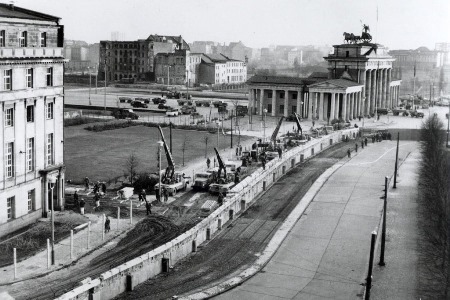
The Berlin Wall
The wall was erected in the dead of night on Aug’13th 1961 and proved to be an effective physical barrier between the occupants of the zones that became East Germany and those who lived in the western zones of Berlin and had the express purpose of keeping disaffected East Germans from fleeing to the West. At the end of World War II, the Allied powers divided conquered Germany into four zones as agreed at the Jul'45 Potsdam Conference with each zone being occupied by either the United States, Great Britain, France or the Soviet Union.
The same was done in Germany's capital city, Berlin. Unfortunately, the relationship between the Soviet Union and the Allies quickly disintegrated and the cooperative atmosphere of the occupation of Germany turned competitive and aggressive. And so in 1949, the zones occupied by the allied powers became West Germany and those occupied by the Russians became East Germany. Most of today's generation, only know the country as Germany, and will not remember sporting events where teams from West and East Germany competed against each other.
One of the best-known post-war incidents was the Berlin Blockade in Jun’48 during which the Soviet Union did their best to prevent any supplies from reaching West Berlin. To combat this, allied air forces flew over 200,000 sorties in one year to provide the West Berliners with necessities such as fuel and food. In the years between 1949 and 1961, about 2.5 million East Germans fled from East to West Germany, including steadily rising numbers of skilled workers, professionals, and intellectuals. Their loss threatened to destroy the economic viability of the East German state and it was for this reason that in 1961, at the height of the ‘Cold War’, the Russians decided to put up a solid barrier to prevent any further exodus of the inhabitants of East Germany to the West.
The Wall was 96 miles long and 13ft high, complete with 300 guard towers at regular intervals and completely surrounded the western zone of Berlin. At the start it comprised temporary barriers of barbed wire which were replaced with vertical concrete slabs reinforced with iron bars over the following weeks. Nothing was allowed to stand in its way, including houses that became part of the barrier and were bricked up. The wall was topped with barbed wire and guarded with watchtowers, gun emplacements and mines. It’s estimated that at least 138 people lost their lives trying to escape across the wall, although as many as 5,000 made it by various ingenious means – hiding in cars, sneaking through border points and crashed tanks, through the fortifications, swimming across the Teltow canal, paddling on a lilo over the river Spree, or crawling out via tunnels specially constructed by escapees and volunteers. Perhaps the most spectacular was a circus tightrope walker who walked across a disused power line, breaking both arms in the process.
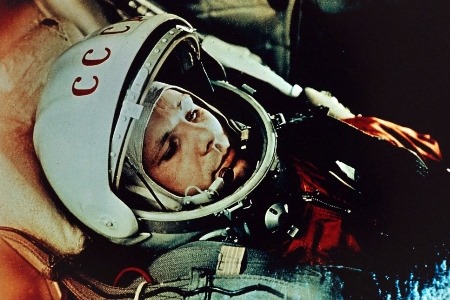
First Man in Space
Russian cosmonaut Yuri Gagarin was the first man in space on Apr’12th 1961. His Vostok 1 spacecraft was launched at 9:07am and orbited Earth once in 1 hour 29 minutes at a maximum altitude of 187 miles before landing at 10:55am in the Soviet Union. He was awarded the Order of Lenin and given the titles of Hero of the Soviet Union and Pilot Cosmonaut of the Soviet Union.
His spaceflight brought him immediate worldwide fame; monuments were raised to him, and streets were renamed in his honour across the Soviet Union. Although Gagarin never went into space again he helped in the training of other cosmonauts as well as doing tours of other countries. Gagarin was killed with another pilot in the crash of a two-seat jet aircraft while on what was described as a routine training flight; his ashes were placed in a niche in the Kremlin wall.
The US was not happy at losing out in the space race to the Russians and less than a month later Alan Shepherd became the first American in space albeit for less than 16 minutes but, unlike Gagarin, he did not orbit the earth. This intensified the space race and led to JFK stating that the US would land on the moon before the end of the decade.
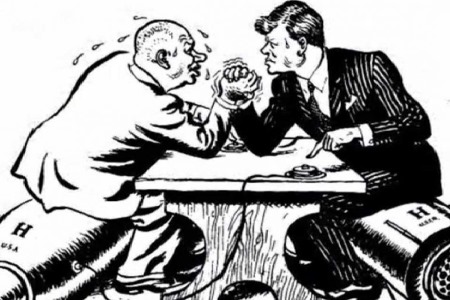
The Cuban Missile Crisis
This cartoon is a well-known and popular depiction of the stand-off between JFK and Russia’s Nikita Krushchev where both leaders appear to be ready to push the button and start a nuclear war whilst both are sitting on each other’s hydrogen bombs. The clear inference is that if either were to do so they would both be blown to smithereens. This is the popular perception of what would happen in reality and the concept of mutual destruction is what drove the Cold War and led to over 50 years of relative peace. Interestingly, this cartoon was almost certainly produced in America as it shows an excessively sweating Krushchev and a taller and more determined looking Kennedy.
The crisis started following the failed 1961 Bay of Pigs invasion of Cuba after which, on Feb’7th 1962, JFK orders an embargo on all imports from Cuba to the US including tobacco, seafood, fruits and vegetables. Cuban and Soviet governments secretly began to build 9 missile bases in Cuba for launching medium-range, ballistic missiles capable of reaching most of the United States. On Oct’14th a US Air Force U-2 plane on a photo reconnaissance mission captured photographic proof of Soviet missile bases under construction in Cuba and a week later US Forces went to DEFCON 3. The same day US ships blockade Cuba and all but one Russian cargo ship turned round; at this point the US went to DEFCON 2 when most of the US defences and attack equipment would have been fully armed and on a 15 minute warning of action, i.e. full scale war.
Assuming Russia was at a similar state of readiness this is how close we were to full scale nuclear war between the world’s two superpowers. To make matters worse a few days after this a US spy plane was shot down over Cuba and the pilot killed. Fortunately, the threat of world destruction finally brought the two countries together and the crisis came to an end with an agreement between Kennedy and Krushchev that the US would remove missiles from Turkey if the Russians did the same in Cuba. Following this and in view of how close we all came to nuclear war the US and Russia established a ‘hot-line’ between Moscow and Washington to hopefully prevent any future similar events.
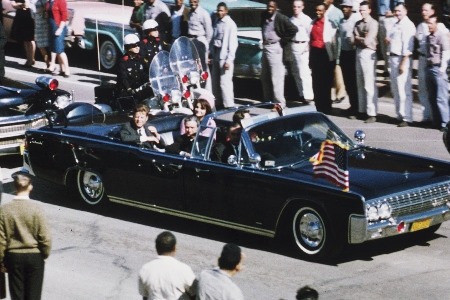
The Assassination of JFK
There were of course many events that took place in 1963 but the one that overshadows all others is the assassination of John F Kennedy on Nov’22nd in Dallas, Texas. It is one of those events, like the moon landing, that people ‘remember’ where they were at the time. I remember quite clearly coming out of a school dance at Dane Court School with my first girlfriend, Jean. I was 17 at the time and like many of the Baby Boomer generation liked JFK for his youth and the breath of fresh air he brought to politics in the world. He hadn't been in politics very long and we didn't know that much about him so it was easy to trust him. After all we had just seen MacMillan resign and Douglas-Home elected PM – not much to excite a 17 year old there! We were all really shocked by the news.
The assassination has been analysed for so many years and there have been numerous conspiracy theories put forward as alternatives to the official verdict - that he was killed by the lone assassin Lee Harvey Oswald. It would take too long to go into any detail and explore the alternative options but I am of the opinion that the theory presented by the late American ballistics and firearms expert Howard Donahue is probably closest to the truth.
Donahue believed that while Lee Harvey Oswald was the assassin and he did indeed fire at Kennedy, but the shot that mortally wounded Kennedy was accidentally fired by one of the Secret Service agents riding in the follow-up car behind the presidential limousine. It is accepted that 3 shots were fired in total, which is largely responsible for the plethora of conspiracy theories as it is known that Oswald only fired two shots; so who fired the third and fatal shot? Who was the ‘umbrella man’, who was the ‘badge man’ on the ‘grassy knoll’ etc., etc.?
According to Donahue, Oswald’s first shot, from a WWII Carcano rifle, hit the road near the limousine and showered the car with fragments, a ricochet of which hit Kennedy lightly in the head. Oswald’s second shot (the so-called ‘Neck Shot’) struck the President in the back of the neck and passed right through him striking Texas Governor John Connally’s back, ribs, wrist and thigh and was found virtually intact on a stretcher at Parkland Hospital. Seconds later, Secret Service agent George Hickey accidentally discharged his AR 15 assault rifle in the follow-up car. This bullet hit Kennedy in the back of the head. What followed this horrible accident was an epic cover-up by the Secret Service and perhaps others to keep the facts of this massive botch-up from the American public.
When the first two shots came, and Donahue’s work has proven that the Warren Commission got the so-called ‘magic bullet’ theory right about the second bullet also hitting Connally, a green, panicked agent (George Hickey) reached for his gun, took off the safety and stood up. When the car lurched forward, he fell back firing off the fatal shot by mistake. The subsequent shooting of Oswald by Jack Ruby and then later Kennedy’s brother Bobby’s assassination by Sirhan Sirhan, a Palestinian Arab, just added to the confusion and fed the conspiracy theories. There are many who still believe that the Mob were behind the whole thing to get rid of the Kennedys who they blamed for the Bay of Pigs; Jack Ruby was a known mob associate.
I think it’s true to say that he continues to be revered and loved in the US. How much more he might have accomplished, in a world that desperately needed unifying, is one of history's most tantalizing questions. In spite of his obvious weaknesses he was a true leader and had a real connection with the youth of the day. I like to believe that America and the world would have become a better place, that the race riots that followed his death may not have happened or that he would have found a way to deal with them without all the violence and bloodshed.
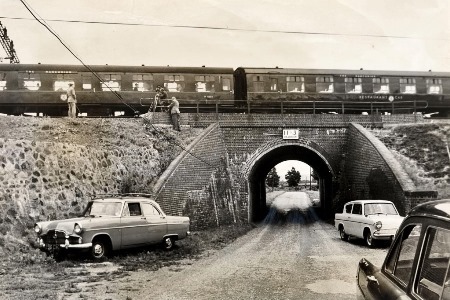
The Great Train Robbery
At 3 a.m. on Thursday, Aug’8th 1963, a British mail train heading from Glasgow to London slowed for a red signal near the village of Cheddington. The train carried over £2m pounds in small notes destined for destruction. When co-engineer David Whitby left the lead car to investigate the delay, he saw that an old leather glove covered the light on the signal gantry. Someone had wired it to a cluster of 6-volt batteries and a hand lamp that could activate a light change. An arm grabbed Whitby from behind; “If you shout, I will kill you” a voice said.

And so began the greatest train robbery of all time and one that has been romanticised and filmed for generations, capturing the headlines and the imagination of the public who looked on the gang as modern day heroes not villains. After-all this was so well planned, along military lines and the money was only going to be destroyed – what harm did it do? In romanticising the heist, people forget that the train driver, Jack Mills, was coshed, suffering some brain damage and never recovered from his injuries until his death less than 6 years later. The gang clearly had inside information but even they were surprised by the quantity of money (£2.6m equivalent to £46m today) and their surprise at the size of the haul was the probably the reason they got careless and were caught so soon after.
The so-called ‘brains’ behind the heist was Bruce Reynolds a well-dressed, seasoned thief who, with the help of his gang pulled off what was the largest cash theft in international history. Scotland Yard’s ensuing investigation turned the thieves into celebrities for a British public stuck in a post-war recession. In many ways the story started after their capture as the public became aware of the planning and ingenuity that went into the robbery which was still fresh in everyone’s mind and the robbers become celebrities. The clockwork nature of the crime, along with the fact that the bulk of the loot was never recovered and some of the robbers never captured, has made it a favourite subject of television and films, as well as popular music. Even Phil Collins got in on the act playing Ronald ‘Buster’ Edwards in the film ‘Buster’ in 1988. When you look at the picture of a group of them (above right) they look just like a bunch of nice blokes not villains. It’s a sad postscript for their fate that they did not get to enjoy the spoils and in fact Buster Edwards was found hanged in a garage in 1994 at the age of just 62. Two wreaths in the shape of trains accompanied his funeral cortege.
After the robbery the gang went back to their hideout at Leatherhead Farm to split the proceeds and make their getaway. One of the robbers was given the task of setting fire to the farm but made a hash of it and fingerprints of gang members were found on a Monopoly set and this led to the arrest of most of the gang. There was so much money that the robbers were playing Monopoly with real money. Bruce Reynolds made his escape to Mexico but after the money ran out he returned in 1968 and was captured and jailed. Ronnie Biggs, probably the most well-known, escaped from prison and went on the run after plastic surgery firstly to Australia and then to Brazil. Suffering from cancer he returned in 2001 and was sent back to prison.
The robbery was undoubtedly well planned but not everything worked out smoothly. Firstly, the coshing of the driver nearly cost them as the train was too complicated for their own driver, so Jack Mills, who was unconscious, had to be roused to move it for them. The train had to be moved to the Bridego Bridge where their getaway vehicles were parked to enable removal of the 120 sacks of money. The Royal Mail sorters on the train were told not to report anything until 30 minutes after they left which gave the police a clue that their hideout was within 30 minutes’ drive. Low flying planes (on training runs over the farm) spooked them and they left the scene immediately instead of lying low for weeks as planned. Also they did not take care to avoid leaving fingerprints and made a hash of burning down the farm which led directly to the prompt arrest and identification of most of the gang.
The two robbers never caught were the mysterious ‘Ulsterman’ and Danny Pembroke, who, unlike some of the gang, was very careful (he wore gloves throughout) and could not be charged as there was no evidence against him. At Leatherslade Farm it has been said that he even took a shovel and went away from the farm to dig a hole rather than use the toilet. In 2014, one of the robbers, Gordon Goody, identified the Ulsterman as Patrick McKenna a 43-year-old Belfast-born postal worker from Islington, London who was reported to be the ‘inside man’. There is some doubt about this and more recently a man called Sammy Osterman, a close friend of convicted train robber Tommy Wisbey, was fingered.
This is a story with many twists and turns that have added to its mystique and even now the full facts are still not completely known and perhaps explains why there are so many conflicting stories in the papers and films. Perhaps the big question is ‘what happened to all that money’. It is estimated that only about 10% can be accounted for.
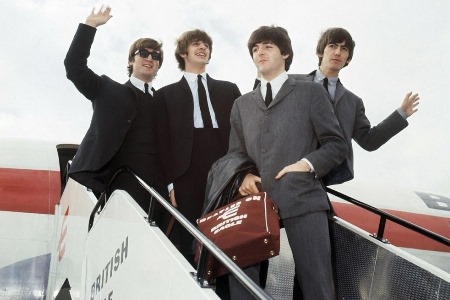
Beatlemania
The Beatles came to the attention of the British public when they released their first recording ‘My Bonnie’ (I don’t remember it either) in Jun’61 with singer Tony Sheridan and drummer Pete Best part of the band. Ringo joined in 1962 and their first record as the band we all know was ‘Love Me Do’ in Oct’62. Their popularity gradually grew in the UK during 1963 and in Jul’63 they played 6 nights at the Winter Gardens in Margate. I went to see them but cannot remember which performance this was, the last being Sat 13th.
By Oct’63 the press coined the term ‘Beatlemania’ to describe the scenes of adulation that accompanied their concerts. Similar scenes accompanied their world tours that started in 1964 and it was the arrival in New York on Feb’7th (inset left) followed two days later by their first performance live on the Ed Sullivan Show that cemented the phenomenon of Beatlemania across the world. It is reported that 34% of the American viewing population (73 million people) watched that performance.
It would be fair to say that no band has had as significant and enduring effect on music in my lifetime and probably we will never see this again. The band and their sound was new and exciting, and after America the Beatles set off on a series of tours in 1964, starting in Europe, later visiting the United States, Hong Kong, Australia and New Zealand. Fans excitement and determination to see the band meant that police sometimes resorted to using fire hoses to hold them back.
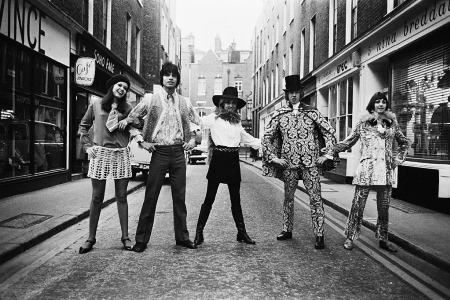
The London Scene - Carnaby Street
It is probably true to say that London and in particular Carnaby Street is the birthplace of the term ‘The Swinging Sixties’. Carnaby Street was the centre of the fashion industry which was probably only second to music in the minds of the youth of the day. The entertainment industry consisting of fashion, music and films helped to push the bad news, of which there was much as shown by this potted history, to the back of our minds during the 60’s.
In many ways it is this abiding image of the 60’s that most of us from my generation remember, not the horrors of the Vietnam War, or the wonders of technology that was the moon landing or even the violence on the streets in America during the race riots. I suppose we all want to remember the era of our youth in the best possible light.
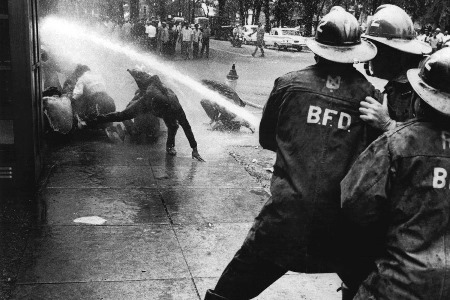
Race Riots in America
Throughout the 60’s it seemed at times that there was hardly a day went by when the news didn’t have something about the race riots in America, especially in the south in places like Alabama, Florida and Ohio and in fact in most American Cities. The segregation of black and white people, the activities of the Ku Klux Klan and the assassination of black leaders including Malcolm X in 1965 and Martin Luther King in 1968 were pivotal moments in history that still resonate today.
On Feb’1st 1960, four determined black men sat at a whites-only lunch counter at a Woolworth's in Greensboro, N.C., and were denied service. Their act of defiance triggered a wave of sit-ins for civil rights across the South that started a decade of violence that is still going on in America today. From 1964 to 1971, there were more than 750 riots, killing 228 people and injuring 12,741 others.
The first major riot in the decade occurred in Harlem and several other African American neighbourhoods of New York City after an off-duty police officer shot and killed a fifteen-year-old African American boy in Manhattan. It all started peacefully with a protest march by a non-violent organisation called the Congress of Racial Equality but this led later to a confrontation between militant protesters and police with those arrested being beaten. This escalated into a full scale riot with white owned businesses being burned and windows smashed and rioters shouting “Burn, baby, burn” the catchphrase of a disc jockey that became the rioters' motto. In many ways this riot was the model for many subsequent riots across the country, often starting out peacefully but then ending in violence, as much through the blacks’ desire for violence as the whites’ (i.e. police) using, in some cases, excessive means to bring about law and order.

Martin Luther King has rightly been lauded for his efforts to bring about change for the blacks in America and the picture above shows him addressing the crowds in Washington on Aug’28th 1963 in which he gave his iconic speech with the now famous line “I have a dream that one day this nation will rise up, live out the true meaning of its creed: 'We hold these truths to be self-evident, that all men are created equal.”. The speech itself is widely regarded as the greatest American speech of the 20th century. If you are interested the speech in its entirety can be heard on the following link 'I have a dream' (audio) speech or download a copy of the iconic speech from this link - 'I Have a Dream' (transcript)
However, this was followed by the murder of civil rights activist Medgar Evers and the fire-bombing of the 16th Street Baptist Church in Birmingham, Alabama by white supremacists, killing four teenage girls and injuring 22 others.
The race riots led President Johnson to establish a National Advisory Commission on Civil Disorders in 1967 that identified white racism as the main cause of the riots. Specifically mentioned were discrimination and segregation, black migration to the cities as whites left them, harsh ghetto conditions, and frustration of hopes and a feeling of powerlessness on the part of many blacks. There is little evidence that serious efforts were made to correct the problems raised by the commission. The Johnson administration, and those that followed, viewed the riots as law-enforcement problems rather than signs of social imbalance.
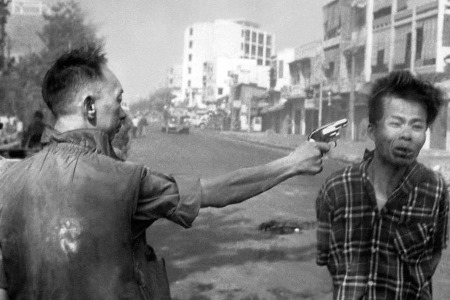
The Saigon Execution
This is the gruesome photo that perhaps most of all captures the horror of this war and one that was used to argue and succeed in changing public opinion that eventually brought about the end of the war. It was shocking and heaven sent to the mainly younger generation who were against the war and who protested against the brutality shown in this photo. However, all is not as it seems. As a photographer, which I'm not, you would like to live by the adage that ‘a picture is worth a thousand words’, but what happens when a picture tells a different story and in fact misrepresents the truth.
This image is one such picture. This iconic image won Associated Press photographer, Eddie Adams, a Pulitzer Prize in 1969 for Spot News Photography and shows the execution of Viet Cong prisoner, Nguyễn Văn Lém, on Feb’1st 1968 with a simple caption “General Nguyen Ngoc Loan executing a Viet Cong prisoner in Saigon” but with no explanatory note.
It seems to show the brutal execution of a civilian but in fact he was a notorious assassin known as Captain Bay Lop leader of a VC death squad who was targeting South Vietnamese officials. After taking control of a South Vietnamese Camp in Go Vap, Bay Lop arrested Lt. Col Tuan along with his family and in an effort to gain intelligence Bay Lop tortured, and eventually executed, Tuan as well as all the members of Tuan’s family including his 80-year-old mother. Bay Lop was captured next to a mass grave of 34 innocent civilians for which he admitted responsibility and in fact boasted of it. Bay Lop was brought in and immediately executed by a bullet to the head. It was immediately adopted to depict ruthless violence and the incivility of the South Vietnamese; however, the image is absolutely contrary to reality and armed with this knowledge most civilised people would regard this shooting as justice.
Adams, who was lucky to be there at the precise moment he was shot, later commented on his regret that he had taken the photo. Adams later said in an article in Time, “The General killed the Viet Cong; I killed the General with my camera. Still photographs are the most powerful weapon in the world. People believe them; but photographs do lie, even without manipulation. They are only half-truths.”
Adams felt that by taking the photo, he had ruined Loan’s life. He felt Loan was a good man, in a bad situation, and he deeply regretted the negative impact that the photo had on him. In fact, Major General Loan later moved to the United States and when he arrived, the Immigration Services wanted to deport him partially because of the photo taken by Adams. They approached Adams to testify against Loan, but Adams instead testified in his favor and Loan was allowed to stay. When Loan died of cancer in 1998, Adams stated, “The guy was a hero. America should be crying. I just hate to see him go this way, without people knowing anything about him”.
The good that came out of this, at least in part, was that public opinion in the US turned against the war and it finally came to an end with 58,000 Americans and over 2 million Vietnamese dead.
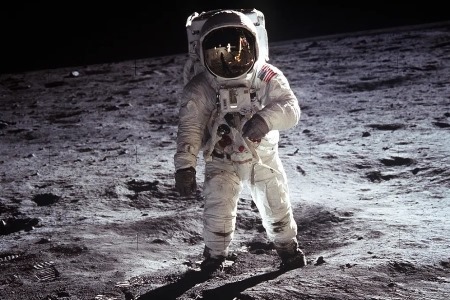
The Moon Landing
On Jul’20th 1969, American astronauts Neil Armstrong and Edwin 'Buzz' Aldrin became the first humans ever to land on the moon. About six-and-a-half hours later, Armstrong took his first step, uttering the famous words “That's one small step for a man, one giant leap for mankind”.
he Apollo 11 mission occurred eight years after JFK announced to Congress that it would be a national goal to land a man on the moon and bring him back successfully by the end of the 1960’s. Many people don’t realise that there were actually five more successful landings with the last space flight to the moon (Apollo 17) in 1972. Apollo 11 took off from Kennedy Space Center with astronauts Armstrong, Aldrin and Michael Collins, the command module pilot, aboard. Armstrong was the commander of the mission and designated as the first man to stand on the moon. It all started when they blasted off from Earth at 9.32am Jul’16th with the world watching. After traveling 240,000 miles in 76 hours, Apollo 11 entered into a lunar orbit on Jul’19th and the following day, the lunar module Eagle, manned by Armstrong and Aldrin, separated from the command module, where Collins remained.
Two hours later, the Eagle began its descent to the lunar surface touching down on the south western edge of the Sea of Tranquillity. Armstrong immediately radioed to Mission Control in Houston, Texas, a now-famous message: “The Eagle has landed”. Aldrin joined his companion on the surface of the moon 19 minutes later and together they took photographs of the terrain, planted a U.S. flag and ran a few simple scientific tests. They returned to the lunar module, slept for the night and then returned to join Collins at the command module for the return flight to Earth spending less than 24 hours on the surface of the moon.
Among the items left on the surface of the moon was a plaque that read: “Here men from the planet Earth first set foot on the moon-July 1969 A.D-We came in peace for all mankind”.
There is no doubt this was an amazing technical feat when you consider the on-board computer had less computing power than the average modern smart phone. The Apollo program was costly and labour intensive, involving an estimated 400,000 engineers, technicians and scientists, and costing $24 billion (circa $100 billion in today’s money). The expense was justified to beat the Soviets to the moon but after it was accomplished, ongoing missions lost their viability.
There have been many conspiracy theories suggesting that the moon landing was staged on a film set on Earth. All of these have been disproved including the following two main theories:
1. There are no stars in photos taken - the stars are too faint to see and the camera is focused on the astronauts not the black sky.
2. The US flag appears to be flapping in the wind (there is no wind on the moon) - when it was stuck in the ground it would have been disturbed and kept that bent shape.
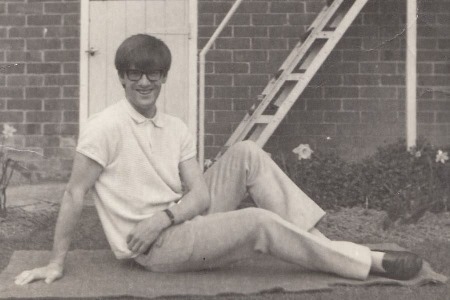
The Swinging Sixties
The Swinging 60’s - Oh to be young again!
This is me at 18 complete with Beatle haircut and home-made, mohair, flared trousers(!). Indoors I have my fur-lined parka (definition of parka - derived from the Nenets language from the Aleutian Islands which means 'animal skin'). It was the must have uniform to wear as a Mod on my Vespa scooter, suitably decorated with chrome lights, flags and badges as I drove along the Thanet Way, wind in my hair (no helmet in those days), heading for Margate on Whitsun weekend of 16-18th May 1964 to have a good old punch up with those greasy rockers on Margate Beach (LOL).
No I made sure I was well out of the way as the two sides rampaged along the beach, burning the deckchairs and generally causing mayhem. A good, ex-policeman, friend of mine assures me that a lot of it was put on for the media but there were over 40 arrests and three people did actually go to prison. You know you are the younger generation when the Chairman of the Bench, Dr. George Simpson, describes you as those 'long-haired, mentally unstable, petty little sawdust Caesars who seem to find courage like rats by hunting in packs'.
When I started out writing this brief account of what I've called the Swinging Sixties, I thought it was going to be all exciting and fun because that's how I remember it, but clearly this is a matter of opinion as the decade was largely about change and for many in the world much of the change was dangerous and not fun at all. I guess all those things going on in the world had little direct impact on our lives in this country. We were living the dream - girls, music, fashion, cars and scooters.
The world was opening up, with travel easier and within our reach; package holidays became cheaper and, unlike our parents, we were able to see the world at a young age without having to actually go and shoot someone or be shot at in a war somewhere. Living where we lived we did not experience much in the way of racial discrimination, many of my best friends were black, or 'people of color' as we are now allowed to say, but it never occurred to me that they were in any way lesser or different than me. Wars were far away and all we saw of it was in the news. I think it was the worlwide success of the Beatles and other British groups and the explosion in youth culture that came with it that transformed society in this country. The disrespect that the youth had for authority, whilst not popular with the older generation, brought about a new sense of freedom.
References
History TodayEncyclopedia Britannica
Wikipedia
Smithsonian Magazine
The Guardian
JFK Library
The Independant
More Pictures
click on/off image for enlargement and additional information

Map of Berlin Wall

They meant business

East-West - tell the difference

Vostok 1, 1st man in space

Earth is so Beautiful

San Cristobal Missile Site

Back from the brink

The funeral of JFK

Escaping with the loot (replay)

Leatherslade Farm

The Villains - their fate

The Lucky Villains

The Girls

The Police

The Beatles in America

Joan Baez & Bob Dylan

Carnaby Street in the 60's

Fashion Centre of the World

Triumph Spitfire GT6

Martin Luther King

Malcolm X

Riots in Detroit 1967

Confronting the National Guard

Gen Nguyen Ngoc Loan - Hero

Casualties of War

Innocents of War

The Burning Monk, Saigon '63

Armstrong, Collins & Aldrin

Moon Landing Conspiracy?

One Small Step for Man
